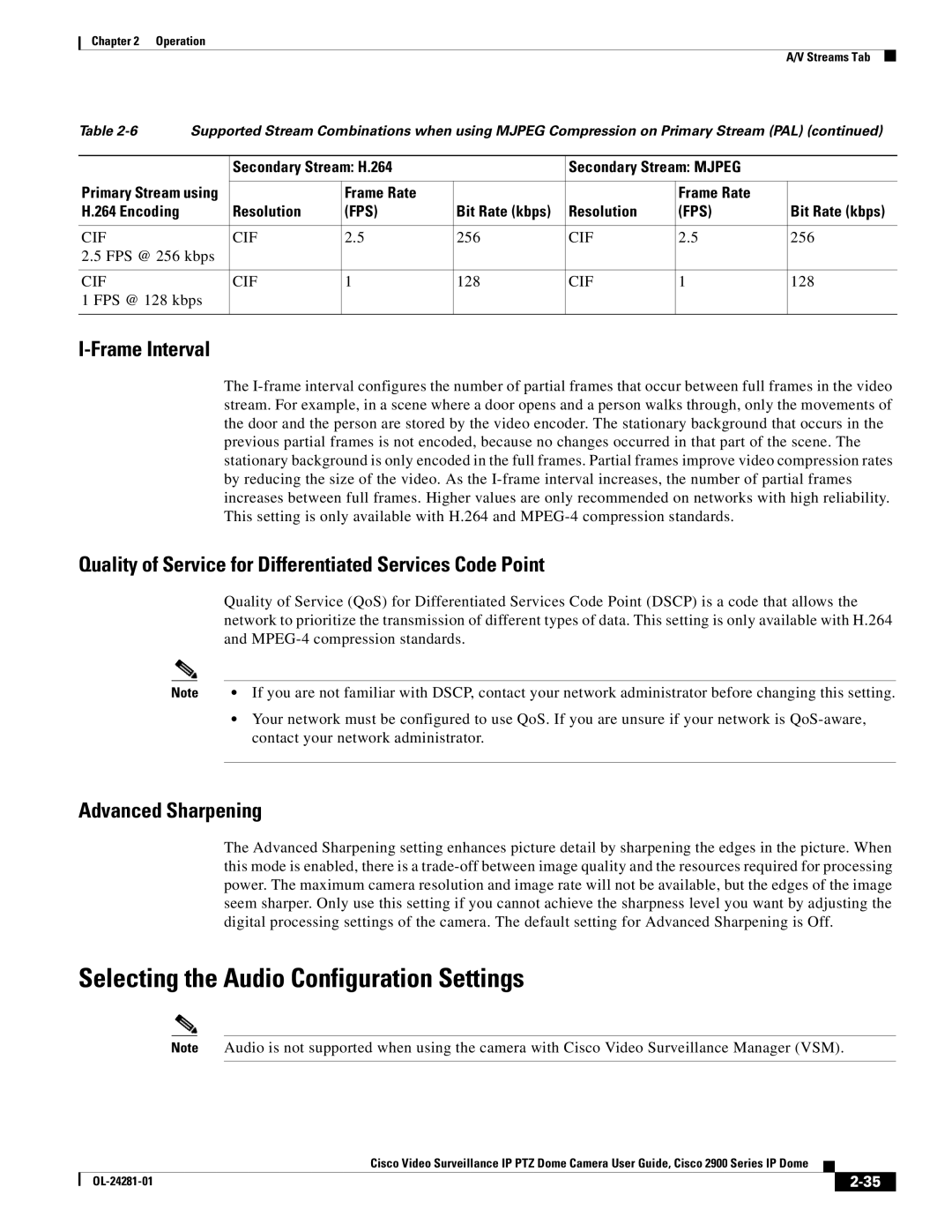
Chapter 2 Operation
A/V Streams Tab
Table | Supported Stream Combinations when using MJPEG Compression on Primary Stream (PAL) (continued) | ||||||
|
|
|
|
|
|
|
|
|
| Secondary Stream: H.264 |
| Secondary Stream: MJPEG |
| ||
|
|
|
|
|
|
| |
Primary Stream using |
| Frame Rate |
|
| Frame Rate |
| |
H.264 Encoding |
| Resolution | (FPS) | Bit Rate (kbps) | Resolution | (FPS) | Bit Rate (kbps) |
|
|
|
|
|
|
|
|
CIF |
| CIF | 2.5 | 256 | CIF | 2.5 | 256 |
2.5 FPS @ 256 kbps |
|
|
|
|
|
| |
|
|
|
|
|
|
|
|
CIF |
| CIF | 1 | 128 | CIF | 1 | 128 |
1 FPS @ 128 kbps |
|
|
|
|
|
| |
|
|
|
|
|
|
|
|
I-Frame Interval
The
Quality of Service for Differentiated Services Code Point
Quality of Service (QoS) for Differentiated Services Code Point (DSCP) is a code that allows the network to prioritize the transmission of different types of data. This setting is only available with H.264 and
Note | • | If you are not familiar with DSCP, contact your network administrator before changing this setting. |
| • | Your network must be configured to use QoS. If you are unsure if your network is |
|
| contact your network administrator. |
|
|
|
Advanced Sharpening
The Advanced Sharpening setting enhances picture detail by sharpening the edges in the picture. When this mode is enabled, there is a
Selecting the Audio Configuration Settings
Note Audio is not supported when using the camera with Cisco Video Surveillance Manager (VSM).
|
| Cisco Video Surveillance IP PTZ Dome Camera User Guide, Cisco 2900 Series IP Dome |
|
| |
|
|
| |||
|
|
|
| ||
|
|
|
| ||
